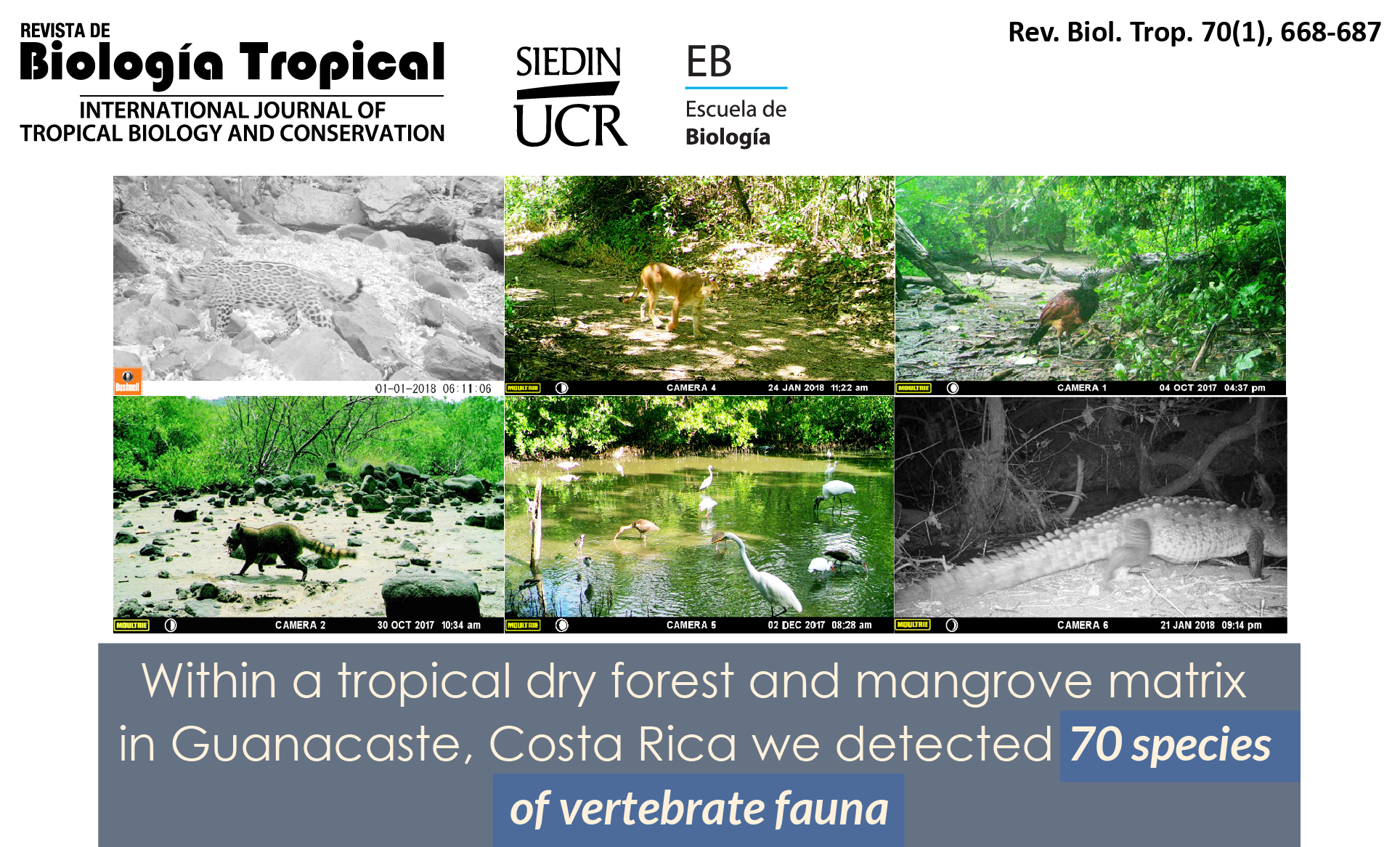Abstract
Introduction: Tropical dry forests and mangroves, two of the world’s most endangered ecosystems, each host a different set of environmental conditions which may support unique assemblages of species. However, few studies have looked at the unique vertebrate biodiversity in regions where both habitats occur side-by-side. Objective: To assess the vertebrate diversity and patterns of habitat usage in a mangrove and tropical dry forest matrix in an unprotected region of Northwestern Costa Rica. Methods: The study was conducted in a 7 km2 matrix of mangrove and tropical dry forests between Cabuyal and Zapotillal bays in Northwestern Costa Rica, South of Santa Rosa National Park. From September 2017 to March 2018, we used 13 automatic camera traps over 1 498 trap days to capture species utilizing the region and assess their patterns of habitat usage both spatially and temporally. Results: Seventy vertebrate species from 42 families in 27 orders were detected, including several globally threatened species. Over half of all species were detected in only one habitat, particularly amongst avian (78 %) and mammalian (42 %) species. Tropical dry forests hosted the greatest number of unique species and supported a greater percentage of herbivores than mangrove or edge habitats, which were dominated by carnivorous and omnivorous species. Mean detections per camera trap of all species increased significantly from the coldest and wettest month (Oct) to the hottest and driest months (Jan & Feb) in tropical dry forests. Sample-based rarefaction analysis revealed that survey length was sufficient to sample the tropical dry forest and edge habitats, though mangroves require further sampling. Conclusions: Taxa found to utilize different forest types may utilize each for different stages of their life cycle, moving between areas as environmental conditions change throughout the year. General patterns of global biodiversity favoring carnivore and omnivore usage of mangrove forests was confirmed in our study.
##plugins.facebook.comentarios##

This work is licensed under a Creative Commons Attribution 4.0 International License.
Copyright (c) 2022 Revista de Biología Tropical



